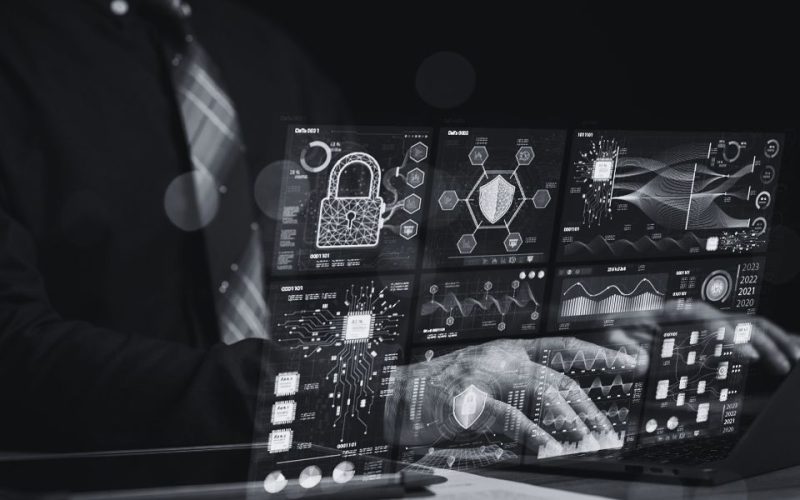In today’s digitally connected world, the lure of public Wi-Fi is undeniable. When our phones lack signal, or our internet crawls and things won’t load, many of us turn to see if there are any public Wi-Fi networks available to get us back online. They’ve become essential for our on-the-go lives, fueling everything from catching up on work emails at cafes to online shopping during airport layovers. However, this convenience comes at a cost: security. And for work devices, the risk is even greater.
Staying connected while on the move is essential these days. Public Wi-Fi can be a lifesaver whether you’re working remotely, traveling, or simply enjoying a coffee at a place like Starbucks. However, being aware of the potential security risks is essential. This guide will help you navigate using public Wi-Fi safely for your personal and professional needs.
Understanding the Risks of Public Wi-Fi Networks
The ease of using unprotected public Wi-Fi networks can be deceptive. These connections look like they would be secure, but often, they lack the security measures found on private networks, exposing your data and devices to potential risks. You can be exposed to several security risks by using public Wi-Fi. These risks include man-in-the-middle” attacks to steal your information as it travels between your device and the network. Hackers can also create fake Wi-Fi networks that look legitimate, tricking you into connecting and giving them access to your data. No matter how safe a public Wi-Fi network appears, hackers could potentially infiltrate it. Here’s why you should be cautious:
Security Breaches Are Not a Mere Statistic
Security breaches aren’t just something our staff at Workplace IT want you to think is a concern. They are a concern for many people. According to a survey done by Forbes Advisor, 43% of people have had their online security compromised while using public Wi-Fi. The breaches can be as invasive as a stolen password or as compromising as intercepted financial transactions.
The Deceptive Allure of Rogue Networks
Despite the façade of legitimate names used by malicious actors to mimic legitimate establishments, you can’t always trust the networks you see when you open your Wi-Fi settings to connect. The network listings on your screen can be a digital mirage that, once connected, allows hackers to see your personal and corporate data.
The Invisibility of Threats
Public Wi-Fi networks are often unencrypted, so your data travels openly across the airwaves. This lack of protection creates a prime opportunity for attackers. They can efficiently operate undetected, stealing sensitive information as it’s transmitted.
Connecting to an unsecured network opens the door to these digital threats, and the consequences for businesses can be catastrophic. From the theft of valuable intellectual property to the exposure of confidential client data, the risks are significant.
When It’s Safe to Use Public Wi-Fi
Even after all we discussed, not all public Wi-Fi is unsafe. There are circumstances where the public network can be leveraged without worrying about whether your data will be secure. Below are situations where the danger of using public Wi-Fi is mitigated and made safer.
The Shield of a VPN
Public Wi-Fi networks can be risky for your data. However, a Virtual Private Network (VPN) adds a robust layer of security. When activated, a VPN encrypts your data, creating a secure tunnel that hides it from prying eyes. With a VPN active, even on public Wi-Fi, your data remains protected from potential cybercriminals.
The HTTPS Beacon of Safety
Although not a foolproof solution, websites secured with HTTPS encryption offer a critical layer of security on public Wi-Fi. The “S” in HTTPS stands for Secure Sockets Layer, a technology that encrypts communication between your device and the website. This encryption helps safeguard your data from being intercepted by attackers on the network.
URGENT But Not Classified Transactions
While public Wi-Fi is generally risky for sensitive data, specific low-risk situations allow for controlled use with proper vigilance. This includes activities like general browsing or quickly checking non-sensitive work emails. However, crucial safeguards are necessary. Limit activity to websites that don’t require sensitive login information (e.g., bank accounts, work portals) and keep your public Wi-Fi usage brief to minimize the exposure window. If possible, prioritize using a mobile hotspot or a secure private network for important tasks. This measured approach allows you to leverage public Wi-Fi for specific situations without compromising your data security, as long as you understand the risks and take appropriate precautions.
The Decision is Yours
By understanding the potential security risks associated with public Wi-Fi and following the guidelines outlined in this document, individuals and businesses can navigate these connections safely. Businesses, in particular, can develop a strategic approach that balances the convenience of public Wi-Fi access with the critical need to protect sensitive data. This could involve implementing secure network gateways, enforcing strong password policies for employee devices, and educating employees about safe browsing practices on public Wi-Fi. Ultimately, the decision of whether or not to use public Wi-Fi comes down to a risk-benefit analysis. By being aware of the potential dangers and taking appropriate precautions, individuals and businesses can leverage the benefits of public Wi-Fi connections without compromising their online security. Remember, public Wi-Fi can be a valuable tool, but it’s crucial to use it wisely.
If you would like more information on protecting your business from cyber threats, contact Workplace IT today. We will provide you with a free audit of your systems to help you stay protected.




